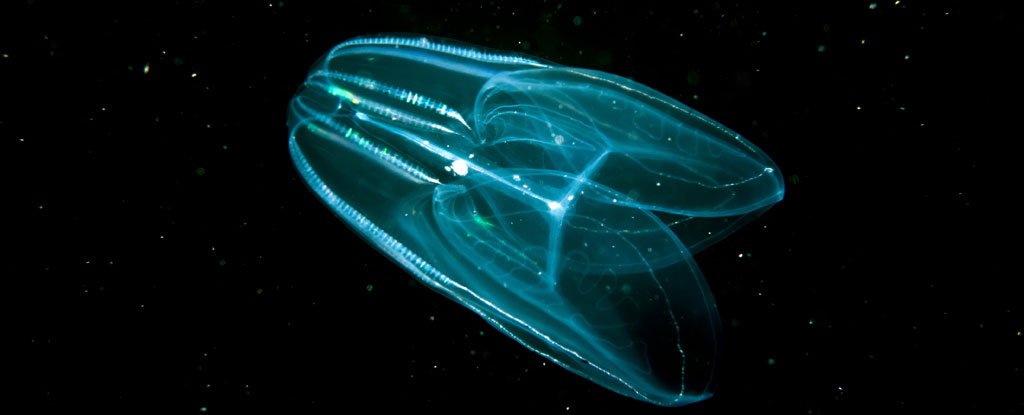- Get link
- X
- Other Apps
Say hello to your new ancestors.
Researchers think they've solved one of the longest-standing mysteries in the world of science: which, of all the branches on the animal family tree, is actually the oldest?
This debate has gone on for more than a century, with scientists historically concluding that sea sponges (Porifera), due to their inherent biological simplicity, were actually the earliest form of animal life. But using a new genomic analysis, researchers now say that comb jellies (Ctenophora) predate sponges, even though they're more complex lifeforms.
In addition to settling the issue of just how much respect you need to pay to that pore-filled spongy mass hanging in your shower, the findings could offer a new way to resolve contradictions in the field of phylogenomics, the study of evolutionary biology incorporating genomic data.
"The current method that scientists use in phylogenomic studies is to collect large amounts of genetic data, analyse the data, build a set of relationships, and then argue that their conclusions are correct because of various improvements they have made in their analysis," says biologist Antonis Rokas from Vanderbilt University.
"This has worked extremely well in 95 percent of the cases, but it has led to apparently irreconcilable differences in the remaining 5 percent."
Those irreconcilable differences can be seen scattered across the last decade, where competing groups of scientists have contradicted one another, with a series of genomic studies alternately claiming that comb jellies or sponges were the oldest branch on the animal family tree.
The most recent example of this was a study published last month, which again made the case that sponges came first.
Now, to figure out why these studies provide such contradictory results, Rokas and his team have devised a new way of comparing genes shared between different animals, to figure out who is most closely related to who.
They tested out the approach on 18 controversial relationships in the field of evolutionary biology – seven from animals, five from plants, and six from fungi – including the literal mother of all animal primacy stoushes: sponge vs comb jelly.
"In these analyses, we only use genes that are shared across all organisms," says Rokas.
"The trick is to examine the gene sequences from different organisms to figure out who they identify as their closest relatives. When you look at a particular gene in an organism – let's call it A – we ask if it is most closely related to its counterpart in organism B? Or to its counterpart in organism C? And by how much?"
By contrasting the difference between how much each gene supports a particular hypothesis – sponges first or comb jellies first – the team came up with a measure they call the phylogenetic signal.
The greater this signal, complied over thousands of genes, the more likely it is that an animal is related to other animals that came after it, meaning it's more likely to have evolved and existed before they did.
In their study, the team found comb jellies show significantly more genes to support their "first to diverge" status than sea sponges do.
The same approach suggests that crocodiles are more closely related to birds than they are to turtles – another recent point of contention in the science world.
As for why other studies come to opposing conclusions on which animals came first – or provide contrasting assessments on how much species are related to one another – the team thinks it's to do with what they call "strongly opinionated genes": rare genes that have the ability to skew statistical results.
In the study, the researchers found that removing these strong genes from genomic analyses could flip the result one way or another – which means that some previous studies might have been tripped up by rogue data that influenced results to an exaggerated degree, suggesting the overall amount of data being looked at might not have been diverse enough.
Of course, given the long history of debate in this area – and the importance of accurately understanding which animal species gave rise to each other – it's likely these findings won't be the last word on the sponge vs comb jellies subject.
But Rokas hopes that their findings will help prevent future studies of the animal family tree from climbing along the wrong branch.

Comments
Post a Comment